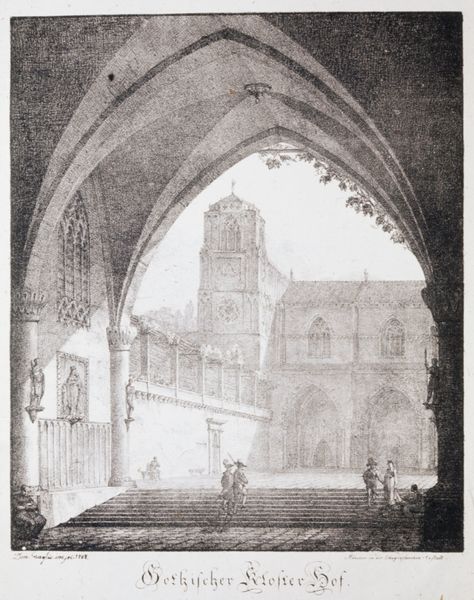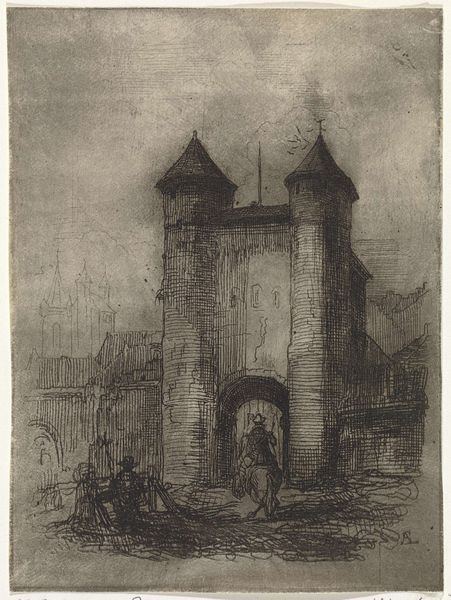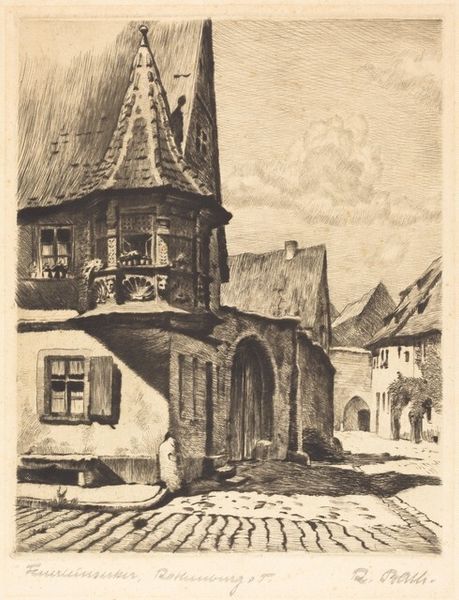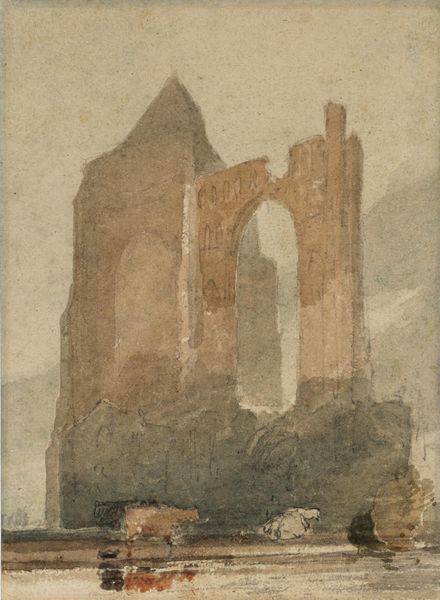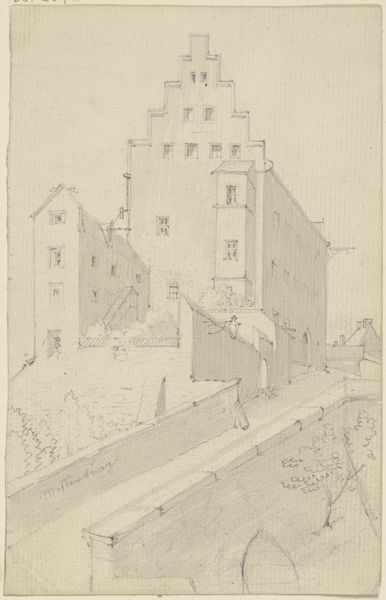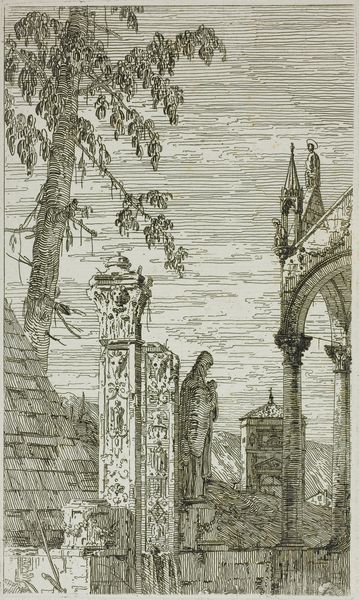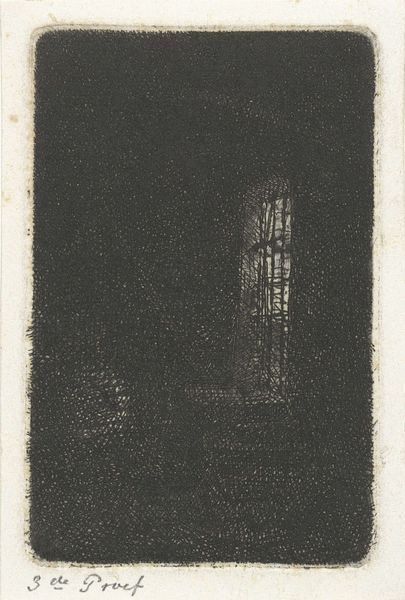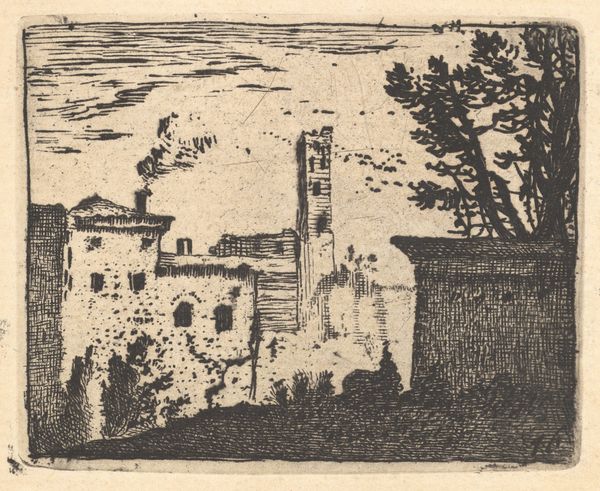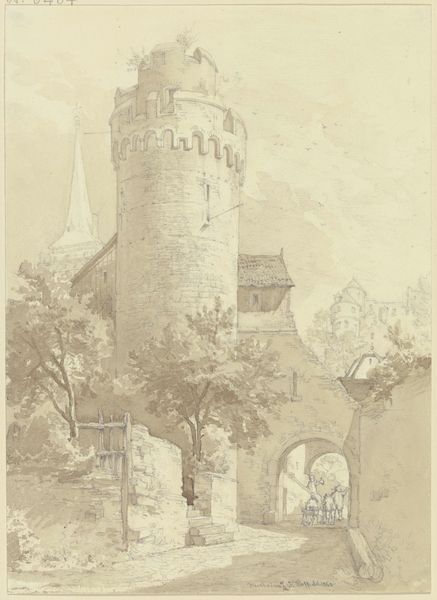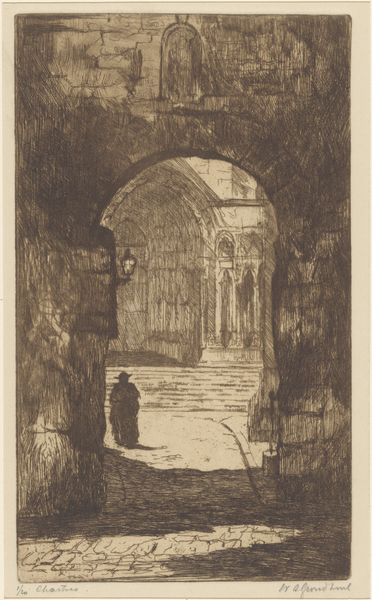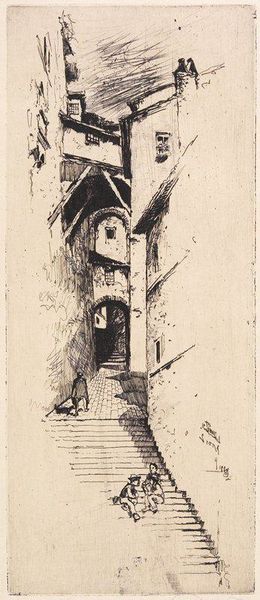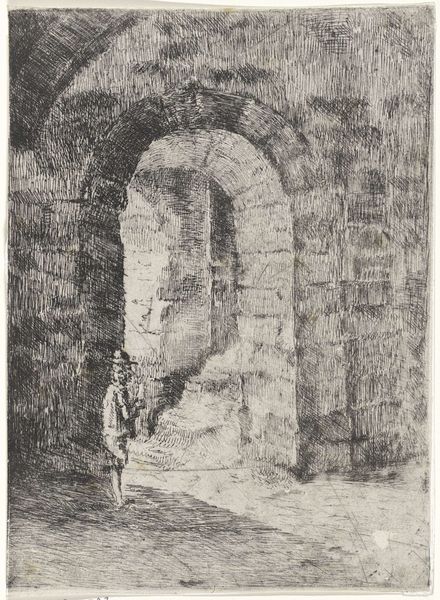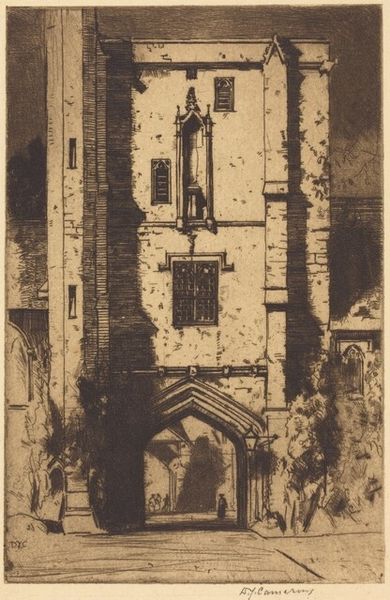
Copyright: Public domain
Editor: This is “By the Townwall,” an oil painting made around 1800 by Caspar David Friedrich. The colors are quite muted, and the composition—with the wall taking up so much space—feels a little claustrophobic to me. What stands out to you? Curator: Indeed, the painting presents a compelling arrangement of forms and textures. Note how the artist uses the stark horizontal line of the wall to divide the canvas. How does this division influence your reading of the spatial relations within the composition? Editor: It flattens everything. The wall seems to push the background elements – the church, the tower – further away, creating this compressed visual plane. Curator: Precisely. Friedrich manipulates perspective not for mimetic accuracy but for expressive effect. Observe, too, the impasto application of paint in the wall’s surface. It creates a tangible sense of roughness, contrasting with the smoother finish of the architectural elements. What purpose might this serve? Editor: Maybe to emphasize the stark reality of the man’s immediate environment, compared to the almost ethereal quality of the buildings in the distance. Curator: An astute observation. Consider, as well, the function of the small figure positioned before the wall. How does its scale and placement affect your interpretation? Editor: The figure seems small and insignificant, almost dwarfed by the architecture. Maybe the painting is contemplating humanity's place within larger societal or historical structures? Curator: Indeed. By analyzing its formal and material properties, we might appreciate Friedrich's painting not merely as a representation, but as a meticulously constructed symbolic configuration. Editor: That gives me a much richer way of considering not just the symbolism, but the actual process of *making* the image.
Comments
No comments
Be the first to comment and join the conversation on the ultimate creative platform.
